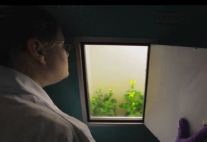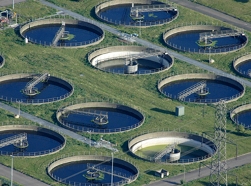Eleven teachers have been recognized by the White House Council on Environmental Quality and the EPA and are the winners of the 2013 Presidential Innovation Award for Environmental Educators.
Smith’s “Thinking Green” initiative incorporates sustainable concepts into trade floor renovation and floor plan.
On April 21, Target will be giving away 1.5 million reusable bags to their customers as a way to celebrate Earth Day.
A list of U.S. metropolitan areas with the most Energy Star certified buildings in 2012 has been released by the EPA. Atlanta, Chicago, Los Angeles, New York, and Washington, D.C. ranked in the top five.
The DEP in Pennsylvania has given 36 small businesses across the state a total of $290,010 in grants for energy efficiency and pollution prevention projects.
While many companies tout their efforts to operate more sustainably, or lessen their environmental impact, few can measure how they are helping other businesses do the same. Salesforce.com is ready to do both, as documented in its first sustainability report.
Cascades has expanded its Tissue Group plant in Lachute, Quebec and has received the LEED Gold certification. The plant is the first paper manufacturing facility to obtain the certification in Canada.
The EPA, the City of Austin, and the State of Texas Alliance for Recycling are hosting a workshop, Sustainable Materials Management: Bringing Everyone and Everything Together, on Feb. 25 and 26.
"We are fortunate to be in a business where we can make a real difference in social sustainability -– saving lives and making life better for people through the types of products and programs we provide," said Marcella Kanfer Rolnick, GOJO's vice chair.
The Asia Pulp & Paper Group (APP) has put an end to clearing natural forests in Indonesia, which applies to all suppliers.
The completion of the new, clean rapid-response boilers and pipeline expansion will contribute to Philadelphia’s environmental and economic goals.

The business case for it is stronger than ever, said Dow's vice president of sustainability and EH&S, Neil C. Hawkins.
The company's new Paper Sourcing and Use Policy announced Oct. 11 took effect immediately.
Energy savings from one of them, occupant responsive lighting systems, ranged from approximately 27 percent to 63 percent.

To reuse water requires capital that they would rather not spend if it's cheaper for them just to dispose of it. I think that's why we don't reuse that much. It might be more cost effective to figure out a way to reuse it than it would be not to.
The Wildlife Conservation Society (WCS) and partners signed an agreement this month that will safeguard some 80,000 acres of intact forest in Guatemala in the heart of the sprawling Maya Biosphere Reserve. Home to jaguars, macaws, pumas and various wildlife, the protected land will continue to serve as a safe haven to all inhabitants.
Because costs of trash collection have increased significantly while landfill space diminishes, radio frequency identification (RFID) holds the potential to dramatically reduce the volume of trash and increase the amount of materials being recycled.

Even though many view environmental protection as coming with an extra cost, a California caterer has managed to cut costs tremendously by going green.
Deforestation in the rainforests of West Africa reduces rainfall over the rest of the forest, according to new University of Leeds research published in Geophysical Research Letters. The study shows that changing land use from forest to crop land reduces rainfall over neighboring trees by about 50 percent due to changes in the surface temperature, which affects the formation of rain clouds.
The past decade has seen 77,951 fires burn about 6.7 million acres in the United States. One condition that facilitates the spread of wildfires is invasive plant species. Nonnative weeds can modify the vegetation of a landscape and provide a source of fuel that did not previously exist.